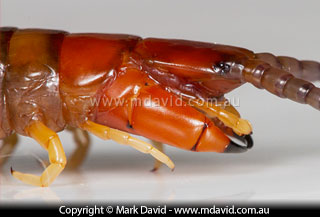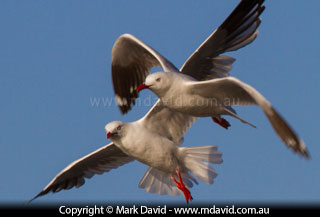
Choosing the right lens or lenses for your SLR will not only help your photography — it can also save you a heap of money. Here’s a bunch of questions you can ask yourself that will narrow down your choice of which lens to buy.

On each of the few occasions that I’ve bought a lens I’ve asked myself the same questions and then followed the same logic. And it’s served me well. So you might want to think about these same things before you hand over your credit card at the camera store.
1 — Do you need every focal length?
I doubt it. But if you think you might need a big range of focal lengths, for example if you want to travel light by taking only one lens, then some of the kit zoom lenses could be a good choice. Canon makes a handy 18-200mm lens for its APS-C cameras for example, which covers a pretty good range of situations.
2 — What kind of photos do you want to take?
Ask yourself which photos taken by other people do you like the most. Because that’s what you’ll probably end up doing. Okay, if the stuff you admire most is pictures of the Earth taken from the International Space Station then my system kind of falls apart here, but you get the general idea.

If you’re keen to do macro photography then you’ll be thinking about lenses capable of focusing close and filling the frame with a small subject. The lens I used for this photo of a centipede was a 100mm macro lens that also has the ability to focus to infinity. And with a maximum aperture of f/2.8 it’s a reasonably fast lens too. Combined with that focal length it makes for a lovely lens for doing portraits of people when I’m not taking pictures of bugs. So that makes it a handy lens!
3 — Which lenses, or which focal lengths were used to take those pictures?
Now you know what you like, find out which focal lengths were used to take those pictures. That might sound difficult, but the good news is, a lot of photography forums online show some fantastic photos taken by amateur photographers that could give some of the professionals a run for their money. And those forum members usually say which lens they used. That could be your first clue about which focal lengths are getting the results you like, or it could even answer your question about exactly which lens to buy. But remember the important difference between APS-C and full frame, because if you have an APS-C camera and the guy online used a full-frame camera or some other kind of camera, then your pictures will look different, especially in things like wide-angle photography. Which brings us to our next consideration.
4 — Do you have a full frame or an APS-C camera body?
The same lens can produce a different result depending on whether your camera is APS-C or full frame. That’s because APS-C cameras have a multiplying effect on focal lengths. Now, if none of this paragraph makes sense then you’re in luck because I explain it in my comparison of APS-C and full frame cameras. So this will probably influence the focal length you need.
5 — If you have an APS-C camera, do you think you always will?
Some lenses made to fit onto an APS-C body won’t work with full-frame cameras. So before you start investing in those lenses made only for APS-C camera bodies, make sure you’re comfortable with the idea. Because if you decide to swap to a full-frame camera body later you will have some lenses that you will no longer be able to use.

Photographing wildlife, or even fast-moving pets, can be made a whole lot easier if you don’t have to be right up close to them. That means a lens with a long focal length. This picture was taken at the 400mm end of a 100-400mm zoom lens.
6 — Do you need a fast lens?
Once you know what focal length, or range of focal lengths you want, then you need to know how ‘fast’ the lens needs to be. If you don’t know what that means, then here’s my article explaining what a fast lens is.
The good news is that with cameras becoming better at working in weak light (thanks to better, more light-sensitive sensors) we don’t need fast lenses as much as we used to.
In other words, if you have a camera that is very good in weak light (capable of taking photos using a very high ISO without too much loss of image quality), then you simply might not need such a fast lens.
That can save you a lot of money, since the super-fast lenses can cost heaps. A fast lens still has an advantage in producing a very small depth of field and that’s an artistic matter you will need to consider. In other words — how badly do you want the ability to get a small depth of field?
7 — Prime lens or zoom?
A zoom lens is one that, well, lets you zoom in and out. And a prime lens is just the one focal length. Which is best?
It used to be a rule that prime lenses got better results. I mean better as in, sharper images and so on. And that makes sense when you think about it, because it’s easier to make a lens that does only one focal length rather than a range of focal lengths. But those clever camera companies just keep getting smarter and so there are some zoom lenses on the market now which are as good as, or nearly as good as the primes. However it costs more to make a zoom lens, so cost might be a factor.
For macro photography I don’t need a zoom because just moving the camera a few inches closer to the subject will make an enormous difference to the composition. But in other types of photography a zoom can be really handy.
I know some photographers hate the very idea of zoom lenses and insist on placing themselves in the perfect position rather than zooming in or out. And there is some logic in that, and not just because running backwards and forwards is good exercise. For example, if you ran up close to your subject and used a wide-angle lens then you would get quite a different look compared with if you stood back and zoomed in with a telephoto focal length. And the prime lens fans say that kind of creative difference should be decided according to creative reasons instead of not-feeling-like-running-forwards kinds of reasons. However there is nothing stopping you from making those same creative decisions with the various focal length options of your zoom lens.
I’m a big fan of the zoom lens mainly because as a wildlife photographer I sometimes just don’t have the opportunity to get close to my subjects.
8 — Image stabilization
Different lens manufacturers have different names for it, but whatever they call it, it’s a means of reducing the effect of camera shake that comes from from holding a camera in your hands. As a general rule, the longer the focal length, the more likely you will need it. But it’s not essential. By using faster shutter speeds at longer focal lengths you can reduce your reliance on image stabilization gadgetry and therefore save yourself a bit of money. I have image stabilization in my 100-400mm lens and I love it. My wide-angle lens doesn’t have it and at that short focal length I doubt I will ever need it.
9 — Weight
This is something to which professionals, who have to lug their gear around all day, often pay a lot attention. And anyone who regularly packs gear for a flight will know the advantage in not having heavy gear in your bags. If you buy a heavy lens then carrying it around all day is going to be uncomfortable and then you’re less likely to do it. My 100-400mm lens weighs a lot and when I first got it, my arm would be shaking at the end of the day. Lighter lenses therefore have an advantage that may or may not be important to you. The weight of one lens versus another does not have to be a deal breaker. Just be aware of the issue and ask yourself if it’s going to be important to you.
10 — Reviews
Once you think you know which lens you want, I think it’s worth a look to see if there are any reviews for it. There are some great reviews online and they are likely to cover a bunch of things relevant to your particular kind of lens, as well as saying if it’s any good or not. This is the last step I usually make before deciding on a lens.
11 — Still can’t decide?
It’s common to have a limited budget while also wanting to do pretty much everything. If that sounds like you, then you might want to consider an all-round zoom lens. Some of the cropped sensor versions (lenses designed to only work on APS-C cameras) can be bought fairly inexpensively because building a lens for a smaller sensor means smaller internal components. Canon, for example, offers the 18-200mm general purpose lens for its APS-C cameras that can handle most situations. I mentioned that at the beginning of this article but I’ll talk a bit more about it now.
18mm is not especially wide on an APS-C camera but still enough to take in a nice landscape. 200mm is really not telephoto enough for small birds (some birders argue that nothing is) but okay for most larger wildlife. And if you’re travelling then taking one lens instead of bag of them has obvious advantages. A general purpose lens is also handy if you don’t have the slightest idea about what kind of situation you might find yourself in.
Sometimes a general purpose lens can a be a bit of a compromise, but not nearly as much of a compromise as when you’re stuck with the wrong specialist lens in your bag, for example if you have a wide-angle lens and you spot a small animal in the distance.
So then the option becomes getting an all-rounder lens and then buying your specialist lenses later if you want.
Which lenses do I use?
Like I was saying earlier, I don’t have many lenses, and that’s because I don’t need a lot. I have a wide-angle lens, a macro lens and a telephoto zoom which reaches out to 400mm (for photographing birds). That combination is fantastic for my nature photography but if you like different kinds of photography then you might not even need as much as that.








